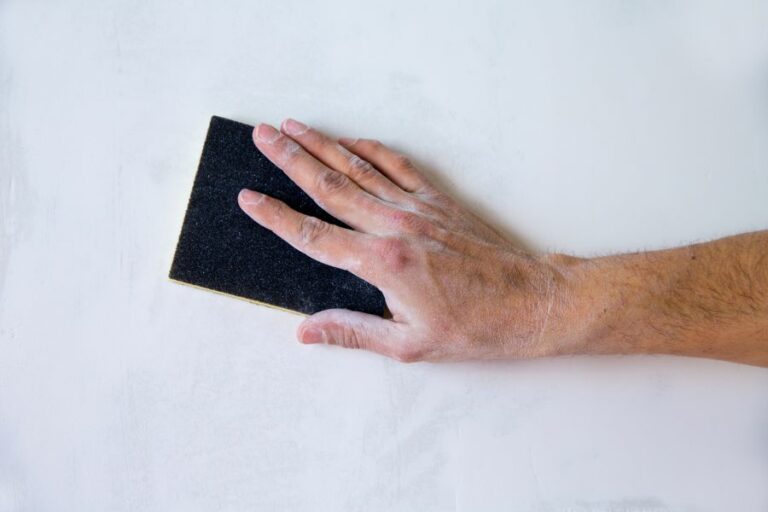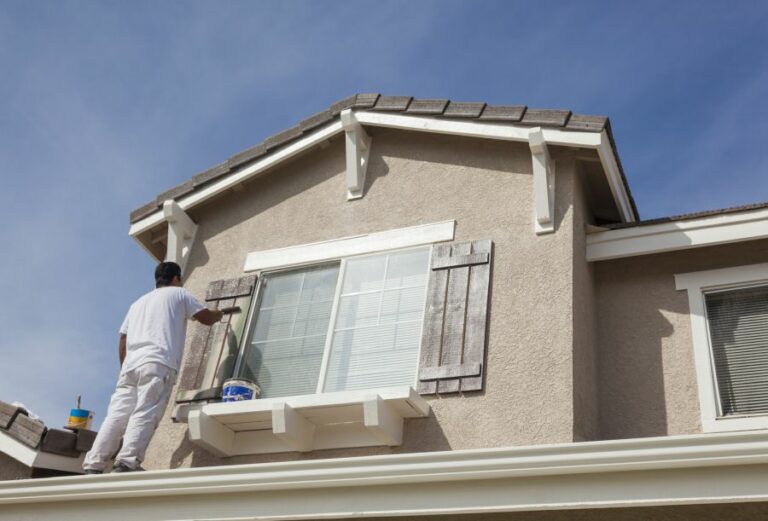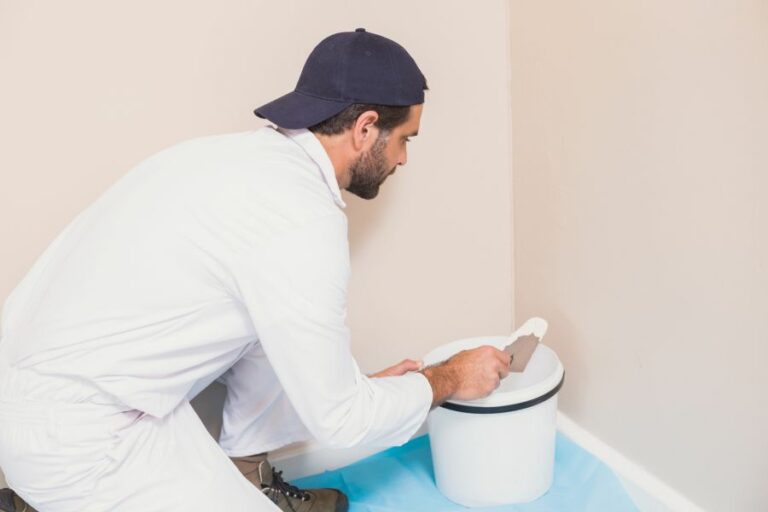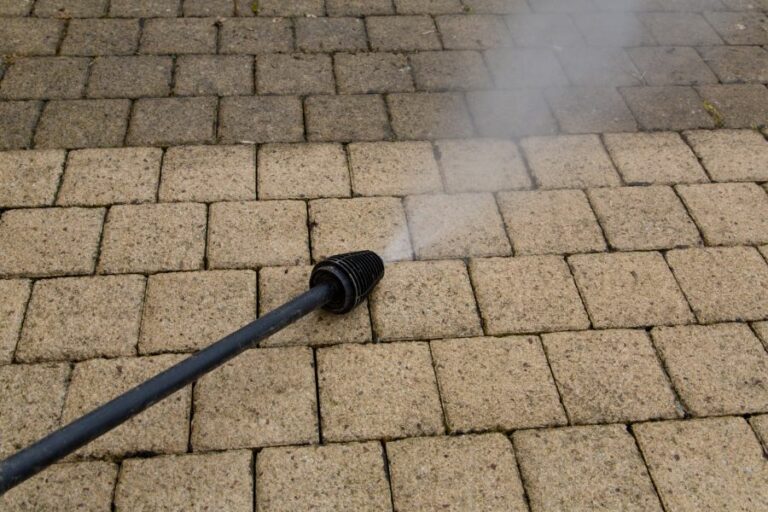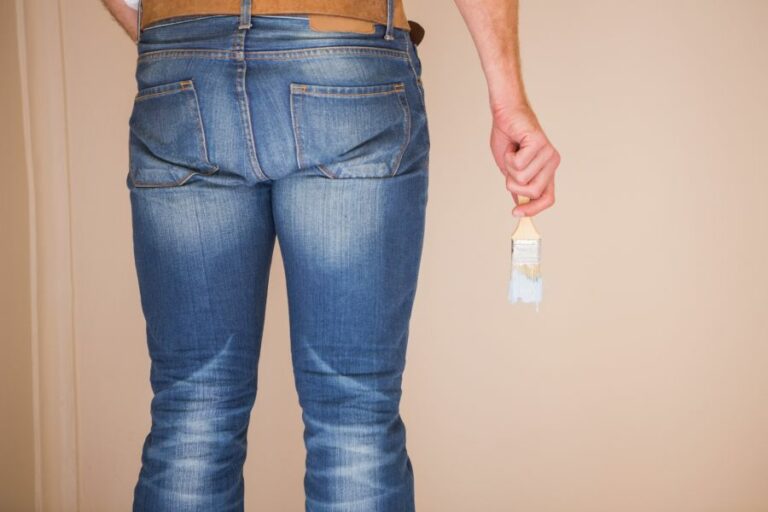Cleaning Surfaces Rust And Loose Paint Removal. What Pros Say
Are you tired of constantly dealing with rusty surfaces and loose paint on your belongings? It’s time to end those annoying blemishes once and for all. Our comprehensive guide on cleaning surfaces, focusing on rust and loose paint removal, will equip you with the knowledge you need to restore and maintain your valued items.
Cleaning surfaces, rust, and loose paint removal:
Cleaning surfaces involves properly removing rust and loose paint to prevent structural weakening and ensure the effective application of protective coatings. Key steps include identifying the extent of damage, selecting appropriate removal tools and methods, surface preparation, applying protective coatings, and regular maintenance.

Eager to restore and renovate surfaces plagued by rust and loose paint? We have just the solutions to help you tackle these common issues effectively! Read on to explore various methods, techniques, and tips to bring out the best in your surfaces while ensuring their longevity. Don’t miss out!
Contents
- 1 Surface Cleaning: Eliminating Rust and Peeling Paint
- 2 Methods for Removing Rust and Paint from Surfaces
- 3 Effective Techniques for Removing Paint and Rust from Metal
- 4 Determining Whether to Remove Paint or Rust First
- 5 Discover the Top Methods for Rust Removal from Surfaces
Surface Cleaning: Eliminating Rust and Peeling Paint
• Importance of Removing Rust and Loose Paint
Rust and loose paint can not only make surfaces look unattractive but can also weaken the structure and decrease the effectiveness of protective coatings. Additionally, rust can lead to the degradation of metal structures and eventually result in complete failure.
Proper removal of rust and loose paint ensures a strong, clean, and safe surface that is ready for a fresh application of paint or coating.
• Identifying the Extent of Rust and Paint Damage
Before beginning the removal process, it’s crucial to assess the extent of rust and paint damage. This can help determine the appropriate removal methods and tools needed for the task.
– Surface Rust
Surface rust is a thin layer of rust that can be easily removed with basic tools and techniques. The underlying metal is still strong, and only a few cleaning steps are necessary.
– Scaling or Pitting
Scaling and pitting can occur when rust has spread deeper into metal surfaces. This type of rust often necessitates more aggressive removal techniques, like power tools, and may require professional assistance.
– Paint Peeling or Blistering
Loose, peeling, or blistering paint may indicate an issue with the underlying surface or poor adhesion of previous paint applications. Complete removal of loose paint is necessary before repainting or applying a new protective coating.
• Tools and Methods for Rust and Paint Removal
– Manual Scraping and Sanding
For small, localized areas of rust and loose paint, manual scraping and sanding can be an effective method. Using a paint scraper or a wire brush, scrape away any loose or flaking paint, followed by sanding the surface with sandpaper.
This process removes surface rust and prepares the surface for new paint.
– Chemical Rust Removers
Chemical rust removers contain ingredients that react with iron oxide (rust) to dissolve it. These are well-suited for smaller, intricate areas or for surfaces where extensive sanding or abrasive removal methods may cause excessive wear.
Always follow the manufacturer’s instructions for using chemical rust removers and ensure proper ventilation and protective gear.
– Abrasive Blasting
Abrasive blasting, like sandblasting or soda blasting, involves using high-pressure streams of abrasive material to remove rust and loose paint. It is an effective technique for large areas, heavily-pitted surfaces, and removing several layers of paint.
However, abrasive blasting can be aggressive and may result in damage to thinner metals or etched surfaces. Professional assistance is typically recommended for abrasive blasting.
– Power Tools
There are various power tools, such as angle grinders, wire wheel attachments, or paint strippers, available for rust and loose paint removal. These tools can be efficient for larger areas or situations where hand scraping or sanding is too time-consuming.
Always use proper safety gear, like goggles and gloves, when using power tools and follow the manufacturer’s instructions.
• Surface Preparation and Protection
Once all rust and loose paint have been removed, it’s essential to prepare and protect the surface to prevent future problems.
– Cleaning and Priming
Before applying new paint or protective coatings, clean the surface thoroughly to ensure proper adhesion. Use a degreaser or detergent to remove any dirt, grease, or oil, followed by rinsing with water.
A metal primer can help seal the surface and enhance paint adhesion. For rust-prone metals, consider using a rust-inhibiting primer.
– Applying Protective Coatings
Many protective coatings, like paint or powder coatings, can provide a barrier against rust formation and offer varying levels of protection depending on their formulation.
Before selecting a coating, consider factors like the type of metal, the environment, and desired finish. Properly applying protective coatings according to manufacturer guidelines will ensure the best protection against rust and paint damage.
– Regular Maintenance
Regular inspections and maintenance can help identify and address rust or paint issues early, preventing more significant problems in the future. Keep surfaces clean and free of dirt or debris, and address any signs of rust or peeling paint promptly.
For more information on rust and corrosion, visit the National Association of Corrosion Engineers (NACE) website, which provides numerous resources and useful insights for dealing with rust and other corrosion-related challenges.
Methods for Removing Rust and Paint from Surfaces
• Mechanical Methods: Wire Brushes, Sanders, and Scrapers
One of the most common and affordable approaches for removing paint and cleaning rust from various surfaces are mechanical methods.
These involve using tools such as wire brushes, sanders, and scrapers. These handheld tools can be found in any hardware store and are effective for small-scale rust and paint removal projects.
For stronger and more robust rust removal, power tools such as angle grinders with wire wheel attachments, orbital sanders, or even drills with wire brush attachments can be utilized. These tools can significantly accelerate the process and provide a more uniform finish.
A recommendation from personal experience is, to begin with a coarse wire brush or sandpaper and gradually move to finer grits to achieve a smooth surface.
• Chemical Solutions: Rust Converters and Paint Strippers
Chemical solutions such as rust converters and paint strippers offer an alternative to the mechanical removal of rust and paint.
These solutions can be applied to the affected area, where they react with the rust or paint, making it easier to remove.
Rust converters are specifically designed to convert the existing rust into a more stable and inert substance, typically a black layer of corrosion-resistant magnetite.
This layer can then be painted over without the need for further mechanical removal of rust. Some popular rust converter brands include “Rust-Oleum” and “Corroseal.”
Paint strippers, on the other hand, soften and loosen the paint from the surface, making it easy to remove using a scraper or a wire brush.
Some common paint strippers contain caustic materials such as sodium hydroxide or potassium hydroxide, while others contain solvents like methylene chloride.
Always follow the manufacturer’s instructions and safety precautions when using chemical solutions. It is also crucial to work in a well-ventilated area and wear appropriate safety gear.
Based on personal experience, a combination of both mechanical and chemical methods can provide the best results in many cases. Applying a chemical solution first can make the mechanical removal of rust and paint much more manageable and less time-consuming.
• Abrasive Blasting: Sandblasting and Soda Blasting
Abrasive blasting involves the use of a high-pressure air stream to project abrasive material, such as sand or baking soda, at the surface to remove rust and paint. This method is highly effective and can remove heavy rust and paint layers from various surfaces like metal, concrete, and brick.
Sandblasting is a widely known abrasive blasting technique that uses sand particles as the abrasive material. While effective, it can also be aggressive, and care must be taken to avoid damaging the underlying surface.
Soda blasting is a more gentle blast cleaning option that uses baking soda (sodium bicarbonate). This technique is suitable for more delicate surfaces or where minimal substrate damage is desired.
It is essential to wear the correct safety gear, like gloves, goggles, and a respirator when using abrasive blasting methods to avoid harmful exposure.
• Laser Cleaning: A High-Tech Alternative
Laser cleaning is a more recent method used for removing rust and paint, utilizing laser beams to ablate the unwanted material from the surface.
The laser energy is absorbed by the rust or paint, breaking their bonds with the base material while leaving the underlying surface intact.
Though highly effective, laser cleaning is generally reserved for specialized applications and industries such as automotive, aerospace, and art restoration, due to its higher cost and the need for specialized equipment.
For more information on rust removal and paint stripping techniques, the U.S. General Services Administration provides a detailed guide on various methods and their applications.
In conclusion, multiple methods are available for cleaning rust and removing paint, ranging from DIY-friendly options like mechanical removal and chemical treatments to more specialized techniques such as abrasive blasting and laser cleaning.
The choice of method will depend on factors such as the extent of rust or paint, the material’s sensitivity, and the project’s budget.
Personal experience and experimentation might be necessary to determine the most effective approach for your specific rust or paint removal needs.
Effective Techniques for Removing Paint and Rust from Metal
Maintaining metal surfaces by removing old paint and rust is essential to prevent corrosion and prolong the life of the material.
• Safety First
Before diving into the various methods of paint and rust removal, it is important to consider personal safety. Always wear proper protective gear, such as gloves, safety glasses, and a mask when working with chemicals or abrasive materials.
• Method 1: Mechanical Removal
– Sandpaper and Steel Wool
One of the most basic methods for removing old paint and rust from metal surfaces is through manual sanding with sandpaper or steel wool. This technique is ideal for small projects with minimal rust or paint buildup.
- Begin with coarse sandpaper (60 to 80 grit) and work your way to finer grit (120 to 220 grit) to smooth the surface.
- When using steel wool, choose a grade appropriate for the level of rust (grade 0 for light rust, grade 1 for moderate rust, and grade 2 for heavy rust).
- Always sand or scrub in the direction of the metal’s grain to prevent scratching.
– Power Tools
Power tools such as angle grinders, sanders, and wire brushes offer a more efficient and effective means of removing old paint and rust from metal.
- Choose an appropriate attachment, such as a wire wheel or flap disc, designed for paint and rust removal.
- Work slowly and methodically, applying moderate pressure to avoid damaging the underlying metal.
- Always follow the manufacturer’s guidelines for proper usage, maintenance, and safety, and wear appropriate personal protective equipment (PPE).
• Method 2: Chemical Removal
When dealing with stubborn rust or multiple layers of paint, using a chemical paint and rust remover can be the most effective and time-saving solution.
- Choose a paint and rust remover suitable for the specific type of metal, and carefully read the manufacturer’s instructions and safety warnings.
- Apply the chemical to the affected area, following the recommended application method and wait time outlined on the product label.
- Use a plastic scraper or steel wool to gently remove the paint and rust, being careful not to scratch the metal’s surface.
- Rinse the treated area thoroughly with water and neutralize the chemical, if required, according to the product’s directions.
- Dispose of the chemical waste following your local regulations and guidelines.
Some chemical paint and rust removers include phosphoric acid or oxalic acid, which can be found at hardware stores or online. It is essential to handle these chemicals with care, following proper safety precautions and disposing of them responsibly.
• Method 3: Electrolysis
Electrolysis is a more advanced and environmentally-friendly method for removing old paint and rust from metal surfaces. This process involves passing an electric current through a conductive solution to loosen rust and paint from the metal.
- Prepare a plastic or non-conductive container large enough to submerge the metal object.
- Fill the container with an electrolyte solution, such as a mixture of water and washing soda (sodium carbonate). In general, use one tablespoon of washing soda per gallon of water.
- Connect the positive lead of a low-voltage DC power supply to a sacrificial metal anode, which can be a piece of rebar or steel that will attract rust and paint during the process.
- Submerge the anode in the electrolyte solution, ensuring it does not touch the metal object being cleaned.
- Connect the negative lead of the power supply to the object being cleaned, submerging it in the solution as well and ensuring that it does not make contact with the sacrificial anode.
- Turn on the power supply and let the electrolysis process work its magic, typically for several hours or overnight, depending on the severity of the rust and paint buildup.
- Once the process is complete, turn off the power supply, disconnect the leads, and remove the object from the solution. Scrub away any remaining rust or paint with a brush or steel wool.
- Rinse the object with water and dry it thoroughly to prevent the formation of new rust.
• Method 4: Blast Cleaning
For large-scale projects or heavily rusted and painted surfaces, professional blast cleaning methods may be the most efficient option. Blast cleaning uses high-pressure air or water mixed with abrasive media, such as sand, glass beads, or crushed walnut shells, to strip away paint and rust from metal surfaces.
- Choose a blast cleaning method appropriate for your project, such as sandblasting, bead blasting, or water jetting.
- Consult with a professional blast cleaning service to ensure proper equipment usage, safety, and waste disposal.
- Follow the blast cleaning process with proper post-treatment, such as priming, painting, or sealing to protect the freshly cleaned metal surface.
• Conclusion
Removing old paint and rust from metal surfaces is essential to ensure the longevity and structural integrity of the material. By following the techniques outlined above, you can effectively maintain and protect your metal surfaces for years to come.
Step | Description |
|---|---|
1 | Wear protective gear such as gloves, goggles, and a dust mask before starting the process. |
2 | Choose a suitable method to remove paint and rust, such as scraping, sanding, using a wire brush, using a paint stripper, or using a rust converter. |
3 | For scraping, use a paint scraper or putty knife and carefully scrape off the old paint and rust without damaging the metal surface. |
4 | For sanding, use sandpaper or a power sander and progressively work from coarse to fine grit to remove the paint and rust. |
5 | For using a wire brush, select a brush with appropriate stiffness and scrub the metal surface to remove paint and rust. |
6 | For using a paint stripper, apply the paint stripper according to the manufacturer’s instructions and wait for it to work. Scrape or wipe off the paint once it has softened. |
7 | For using a rust converter, apply the rust converter on the rusted areas according to the manufacturer’s instructions and wait for it to dry. The rust will be converted into a stable surface that can be painted. |
8 | After removing the paint and rust, clean the metal surface with soap and water, and let it dry completely. |
9 | Apply a primer and paint to the metal surface if desired to protect it from future rust and corrosion. |
Determining Whether to Remove Paint or Rust First
• Understanding the Importance of Surface Preparation
Before diving into the order of removing paint and rust, it’s essential to understand the importance of proper surface preparation.
Surface preparation is critical when it comes to repainting or refinishing an object or surface, as it ensures better adhesion of the new paint or coating, extending its lifespan and improving its overall appearance.
Poor surface preparation can result in an unstable or uneven finish, which can eventually lead to the new paint or coating failing prematurely.
A properly cleaned and prepared surface will provide the optimal environment for new paint or coating to adhere to, helping prevent peeling, flaking, and other issues.
Proper surface preparation entails removing all contaminants such as paint, rust, grease, and dirt from the surface.
This can be achieved through various methods, including chemical treatments, abrasive blasting, and manual removal. Choosing the most appropriate technique will depend on the type and extent of the contamination.
Now, to answer the question, “Should I remove paint or rust first?,” let’s explore the reasons behind each step in the process.
• Removing Paint Before Rust: The Benefits
Most professionals recommend removing paint before tackling rust. Here are several reasons why:
– Improved Visibility
Removing paint before addressing rust will generally provide better visibility of the affected areas. Rust might not always be visible beneath the paint, and removing the paint can expose more surface areas to help determine the extent of the rust issue.
– Easier Rust Removal
Additionally, removing the paint first often makes rust removal easier to perform. Exposing the rust underneath paint allows a more targeted approach to eliminating it, utilizing tools and techniques specifically designed for rust removal without damaging the surrounding areas.
– More Efficient Surface Preparation
Removing paint first also helps ensure appropriate surface preparation for the subsequent coatings. With the paint gone, it is easier to see and address any remaining rust or other contaminants that could compromise the integrity of the new paint or coating.
• Approaching Paint and Rust Removal
Now that we know the benefits of removing paint before rust, it’s essential to understand the various methods available for the task.
– Chemical Strippers
Chemical paint strippers are a common and effective method for removing paint from various surfaces. These products work by breaking down the chemical bonds in the paint, allowing for easy removal.
When using chemical strippers, it’s crucial to follow the manufacturer’s instructions and use proper safety gear, such as gloves and eye protection, to avoid any accidents or adverse reactions.
– Mechanical Methods
Mechanical methods, such as sandpaper, grinders, and wire brushes, are also effective for paint and rust removal. Sandpaper can be used manually or with an electric sander on flat surfaces, while grinders and wire brushes are more suited for heavy-duty paint and rust removal.
When using these tools, it’s essential to choose the appropriate grit or brush strength to avoid damaging the surface beneath the paint.
– Abrasive Blasting
Abrasive blasting, such as sandblasting or media blasting, can effectively remove both paint and rust in a single step. However, this process can be aggressive and may damage the surface if not executed correctly.
It’s essential to use the proper media type, pressure, and technique to achieve the desired results without causing harm to the surface or surrounding areas.
• Addressing Rust After Paint Removal
Once the paint has been removed, you can address any rust present on the surface. Several options can be considered when it comes to rust removal:
– Mechanical Methods
As previously mentioned, mechanical methods such as wire brushes or grinders can be useful for removing rust. Just as with paint removal, choose the appropriate brush or wheel for the job and carefully work on the affected areas to minimize any risks of damaging the surface.
– Chemical Rust Removers
There are various chemical rust removers on the market specifically designed to dissolve rust, making it easy to remove. When using these products, follow the manufacturer’s instructions and be sure to wear appropriate safety gear.
Rinse thoroughly after using a chemical rust remover to ensure no residue remains on the surface before repainting.
– Rust Conversion
Rust converters are another option to consider when dealing with rust. These products work by chemically converting the rust into a more stable, paintable surface. Rust converters can be applied directly to the rusted areas and usually require minimal surface preparation.
However, it is advised to remove loose rust and debris before applying a rust converter to get the best results.
After the rust has been effectively removed or converted, ensure that the surface is thoroughly cleaned and free of any residual contaminants, and apply a quality primer and paint or coating to complete the process.
In conclusion, it is generally recommended to remove paint before addressing rust during surface preparation. Following this order helps ensure better visibility, efficient rust removal, and a properly prepared surface for new paint or coatings. Choosing the most suitable method for removing both paint and rust is crucial to achieving successful and long-lasting results.
Discover the Top Methods for Rust Removal from Surfaces
Rust is a curse to metal surfaces and an eyesore to the beauty of the objects. It can destroy the integrity of metal and weaken the structure. Removing rust from surfaces is essential for maintaining and enhancing the life of the object.
• Mechanical Methods
– Sandpaper, Steel wool, or Wire Brush
Using sandpaper or a steel wool pad to scrub off the rust is a common method. Start with coarser grit sandpaper, and then progress to finer grits for a smooth finish.
This is particularly effective for smaller, more intricate objects. If working on larger surfaces, a wire brush is a better choice, as it covers more area and is more durable.
– Power Tools
For tackling heavy rust, power tools such as angle grinders or drill attachments can be used. Ensure that the proper grinding, sanding, or wire brush attachment is selected for the tool, and use proper safety equipment such as gloves and eye protection.
• Chemical Methods
– White Vinegar
One of the most affordable and eco-friendly methods is using white vinegar. Due to its acetic acid content, vinegar is effective in dissolving rust. Soak the rusted object in white vinegar for a few hours and then scrub with a brush or steel wool.
Alternatively, apply the vinegar directly to the rusted surface and let it sit for a few minutes before you scrub it off.
– Baking Soda Paste
Another household item that can help remove rust is baking soda. Make a paste by mixing baking soda and water. Apply it to the rusted surface and let it sit for an hour or two before scrubbing it off with a brush.
– Citric Acid
Citric acid is a powerful rust remover that’s often found in commercial rust removers. You can purchase citric acid powder from your local grocery store or online. Mix the powder with water to create a solution and soak the rusted object for a few hours. Scrub with a brush or steel wool, then rinse well.
– Commercial Rust Removers
Several commercial rust removers are available in the market, but it’s essential to choose wisely. Some of these products contain harsh chemicals that can be harmful to the user and the environment. Opt for eco-friendly, non-toxic formulas that are suitable for the type of metal you’re working on.
• Electrolytic Rust Removal
Electrolytic rust removal is an effective and non-abrasive method for removing rust from metal surfaces. This method involves submerging the rusted object in an electrolyte solution and connecting it to a low-voltage power source, causing the rust to be attracted to a sacrificial electrode.
• Laser Rust Removal
Laser rust removal is a high-tech method that uses powerful laser beams to remove rust from surfaces without causing damage to the underlying material.
This method is often used in industries for cleaning and restoration jobs. While this method is highly effective, it may not be suitable for household applications due to its cost.
• Final Thoughts
Each rust removal method has its unique advantages and disadvantages, and the choice largely depends on your specific situation.
The type of object, degree of rust, and budget are factors to consider. I recommend starting with eco-friendly, cost-effective options like white vinegar and baking soda paste before considering more abrasive or chemical-based methods.
Always wear protective gear like gloves and goggles when dealing with chemicals or tools. Regular maintenance and protective measures such as painting, coating, or storing objects in a dry environment can prevent rust formation in the first place, saving you from the need for frequent rust removal tasks.
| What is the best way to remove rust from surfaces? | |
|---|---|
| 1. Mechanical methods | Using a wire brush, sandpaper, or abrasive wheel to rub off the rust. |
| 2. Chemical methods | Applying a rust remover or rust converter, such as oxalic acid or phosphoric acid, to dissolve the rust and convert it into a more stable compound. |
| 3. Electrolysis | Submerging the rusty object in an electrolytic solution and passing an electric current through it to remove the rust. |
| 4. Natural remedies | Using household items, such as vinegar, lemon juice, or baking soda, to dissolve and remove the rust. |
| 5. Preventive measures | Regularly cleaning and maintaining surfaces to prevent the formation of rust in the first place. |


